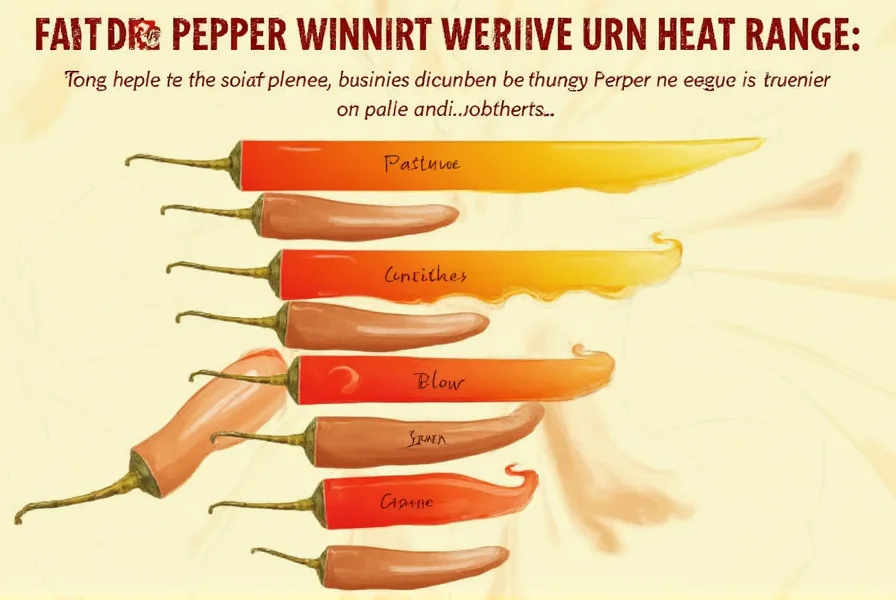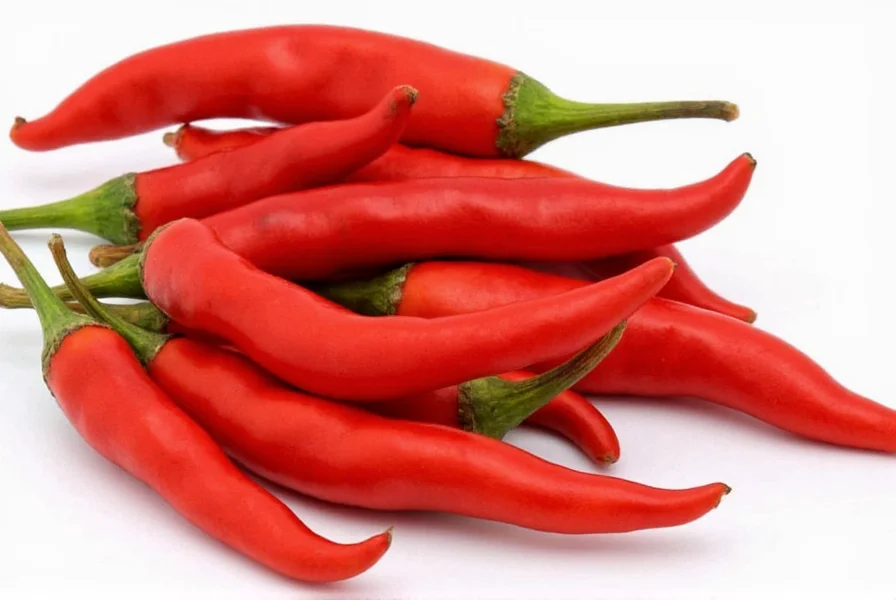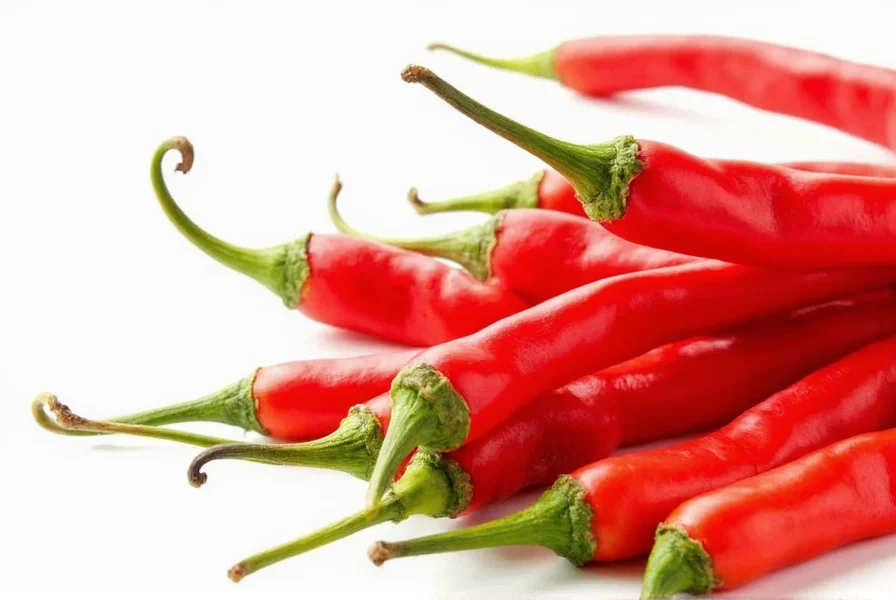Cayenne pepper isn't just another spice sitting forgotten in your pantry. This vibrant red chili has shaped culinary traditions worldwide while earning scientific interest for its bioactive compounds. Understanding what cayenne pepper truly is requires examining its botanical identity, historical journey, and multifaceted applications beyond mere heat.
Botanical Identity and Varieties
Cayenne belongs to the Capsicum annuum species, which includes bell peppers, jalapeños, and other common chili varieties. Despite common misconceptions, "cayenne" refers to specific cultivars rather than a single uniform pepper. These slender, tapered peppers typically measure 2-5 inches long, ripening from green to brilliant red. The heat level—ranging from 30,000 to 50,000 Scoville Heat Units—places cayenne significantly hotter than jalapeños (2,500-8,000 SHU) but milder than habaneros (100,000-350,000 SHU).

Historical Journey and Global Adoption
Indigenous to Central and South America, cayenne peppers were cultivated for over 6,000 years before European contact. Christopher Columbus mistakenly named them "peppers" due to their pungency resembling black pepper (Piper nigrum). Portuguese traders subsequently introduced cayenne to Africa and Asia in the 15th century, where it became integral to regional cuisines. The name "cayenne" derives from the French Guianese city of Cayenne, though the pepper wasn't originally native to that region.
Nutritional Composition and Bioactive Compounds
A single tablespoon (5g) of cayenne powder provides:
| Nutrient | Amount per Serving | % Daily Value |
|---|---|---|
| Calories | 17 | 1% |
| Vitamin A | 44% DV | 44% |
| Vitamin E | 8% DV | 8% |
| Vitamin C | 7% DV | 7% |
| Vitamin B6 | 10% DV | 10% |
| Iron | 4% DV | 4% |
The primary bioactive compound, capsaicin (8-methyl-N-vanillyl-6-nonenamide), constitutes 0.1-1% of dried cayenne by weight. This alkaloid triggers thermogenesis—the body's heat production process—while interacting with TRPV1 receptors responsible for heat sensation. Contrary to popular belief, the seeds contain minimal capsaicin; the highest concentration resides in the white pith surrounding the seeds.
Culinary Applications Across Cultures
Cayenne's versatility extends far beyond simple heat addition. In Louisiana Creole cuisine, it forms the "holy trinity" with paprika and black pepper in Cajun seasoning. West African cooking incorporates it into stews like Senegal's maafe, while Indian cuisine uses it in small quantities to enhance complex spice blends without overwhelming other flavors. Professional chefs often prefer cayenne in powdered form for even distribution, though fresh peppers feature prominently in Caribbean jerk seasoning and Thai curry pastes.
Evidence-Based Health Considerations
Research suggests several potential benefits associated with cayenne consumption, though important distinctions exist between culinary use and concentrated supplements:
- Metabolic effects: Studies indicate capsaicin may increase energy expenditure by 50-100 calories daily through thermogenesis
- Pain management: Topical capsaicin creams (0.025%-0.1%) show efficacy for osteoarthritis and neuropathic pain
- Cardiovascular health: Population studies associate regular chili consumption with reduced cardiovascular mortality
- Digestive effects: Contrary to myth, moderate cayenne intake doesn't cause ulcers and may protect gastric mucosa
It's crucial to note that most research examines concentrated capsaicin, not typical culinary amounts. The FDA recognizes cayenne as Generally Recognized As Safe (GRAS) for food use, but therapeutic applications require medical consultation.
Practical Usage Guidelines
When incorporating cayenne into cooking:
- Start with 1/8 teaspoon per dish and adjust gradually—its heat builds slowly
- Always handle with care; wear gloves when processing fresh peppers
- Balance with fats (oil, coconut milk) or acids (lime juice, vinegar) to moderate heat
- Store dried powder in airtight containers away from light for maximum potency retention

Safety and Contraindications
While generally safe as a food ingredient, cayenne requires caution in specific situations:
- Avoid contact with eyes or sensitive skin (immediate milk rinse recommended for exposure)
- Those with GERD may experience symptom exacerbation
- Discontinue use 2 weeks before surgery due to potential blood-thinning effects
- High-dose supplements may interact with blood pressure medications
Remember that culinary use differs significantly from medicinal supplementation. The amount typically used in cooking (1/8-1/4 teaspoon per serving) rarely causes adverse effects in healthy adults.
Conclusion: Beyond the Heat
Understanding what cayenne pepper is requires recognizing its dual identity as both a culinary staple and a subject of scientific interest. More than just a heat source, this versatile pepper contributes flavor complexity, potential health benefits, and cultural significance across global cuisines. Whether you're seasoning roasted vegetables, exploring traditional remedies, or simply curious about that red powder in your spice rack, appreciating cayenne's full profile enhances both cooking and informed consumption.
Frequently Asked Questions
What's the difference between cayenne pepper and red pepper flakes?
Cayenne pepper is a pure ground powder made exclusively from cayenne peppers, while red pepper flakes contain a mixture of辣椒 varieties including cayenne, bell peppers, and other chili types. Cayenne provides consistent heat (30,000-50,000 SHU), whereas red pepper flakes vary in heat level and often include seeds and membrane fragments that increase spiciness unpredictably.
Can cayenne pepper help with weight loss?
Research shows capsaicin may modestly increase metabolism (about 50 calories daily) and reduce appetite temporarily. However, these effects are too small to produce significant weight loss alone. When incorporated as part of a balanced diet, cayenne might support weight management efforts but shouldn't be considered a standalone solution.
How should I store cayenne pepper to maintain freshness?
Store cayenne pepper in an airtight container away from light and heat. Properly stored in a cool, dark cupboard, ground cayenne maintains potency for 6-12 months. For extended freshness (up to 2 years), refrigerate in a sealed container. Avoid storing near stovetops or ovens where temperature fluctuations degrade flavor compounds.
Is cayenne pepper safe for daily consumption?
Yes, culinary amounts (typically 1/8-1/4 teaspoon daily) are safe for most adults. However, those with gastrointestinal conditions like IBS or GERD should monitor their tolerance. If using cayenne supplements rather than culinary amounts, consult a healthcare provider as concentrated doses may interact with medications.
Why does cayenne pepper create a burning sensation that lasts so long?
Capsaicin binds to TRPV1 receptors that detect heat and pain. Unlike actual burns, this chemical reaction isn't washed away by water (which spreads the oil-based capsaicin). The sensation persists until capsaicin naturally metabolizes or is neutralized by fats (milk, oil) or acids (lemon juice). Complete dissipation typically takes 15-30 minutes.











 浙公网安备
33010002000092号
浙公网安备
33010002000092号 浙B2-20120091-4
浙B2-20120091-4